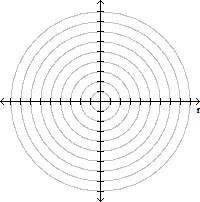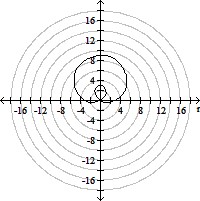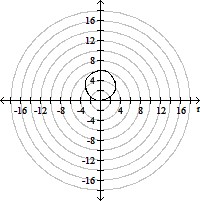Solve the problem.The arch beneath a bridge is semi-elliptical, a one-way roadway passes under the arch. The width of the roadway is 30 feet and the height of the arch over the center of the roadway is 11 feet. Two trucks plan to use this road. They are both 12 feet wide. Truck 1 has an overall height of  and Truck 2 has an overall height of
and Truck 2 has an overall height of  . Draw a rough sketch of the situation and determine which of the trucks can pass under the bridge.
. Draw a rough sketch of the situation and determine which of the trucks can pass under the bridge.
A. Neither Truck 1 nor Truck 2 can pass under the bridge.
B. Truck 2 can pass under the bridge, but Truck 1 cannot.
C. Truck 1 can pass under the bridge, but Truck 2 cannot.
D. Both Truck 1 and Truck 2 can pass under the bridge.
Answer: B
You might also like to view...
Solve the equation.5x2 - 3x - 8 = 0
A. 
B. 
C. 
D. 
Graph the polar equation for ? in [0°, 360°).r = 3(1 + 2 sin ?)
A. 
B. 
C. 
D. 
Graph the inequality on the number line.x < 
![]()
A. ![]()
B. ![]()
C. ![]()
D. ![]()
Solve the problem.Ultraviolet radiation from the sun is thought to be one factor causing skin cancer. The amount of UV radiation a person receives is a function of the thickness of the earth's ozone layer which depends on the latitude of the area where the person lives. The following data represent the latitudes and melanoma rates for nine randomly selected areas in the United States. The melanoma rates refer to a three-year period.  Graph the data on a scatter diagram treating latitude as the independent variable. Find an equation of the line containing the points
Graph the data on a scatter diagram treating latitude as the independent variable. Find an equation of the line containing the points 
/> and  Express the relationship using function notation. Graph the line on the scatter diagram. Interpret the slope of the line. Use the line to predict the melanoma rate of an area with a latitude of 37.7 degrees north.
Express the relationship using function notation. Graph the line on the scatter diagram. Interpret the slope of the line. Use the line to predict the melanoma rate of an area with a latitude of 37.7 degrees north. 
What will be an ideal response?